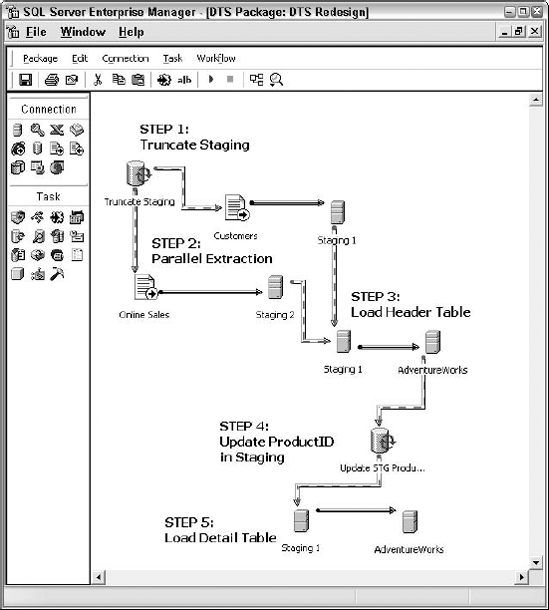11.1. That Was Then: DTS
You may be familiar with SSIS's predecessor, SQL Server 2000 Data Transformation Services (DTS). If not, DTS is a widely used tool designed to move data from one source to another, and many organizations have developed compelling BI ETL solutions using DTS. The differences between SSIS and DTS are many, though. In fact, SSIS is not a new version of DTS; it is a new tool in the SQL Server 2005 platform that replaces and extends DTS's functionality.
Does Figure 11-1 look familiar? If you've developed any DTS-based solutions to handle data processing, then surely you recognize it.
Figure 11.1. Figure 11-1

Since the topic in this chapter is Integration Services, the analysis of DTS will not be exhaustive; however, you will consider a few aspects of a typical DTS architecture in order to compare it with an Integration Services architecture. Ideally, the design of your ETL or data-processing solution will not be driven by your choice of ETL tool; however, a tool's capabilities inevitably influence the design. Source-to-destination data mappings are still the same and destination data structures do not change, but the process and logic to move and transform data from one to the other can be dependent on the capabilities of the tool. This was the case with DTS (in fact, this applies to any tool that is selected, but the difference is how much flexibility the ...
Get Professional SQL Server™ 2005 Integration Services now with the O’Reilly learning platform.
O’Reilly members experience books, live events, courses curated by job role, and more from O’Reilly and nearly 200 top publishers.

